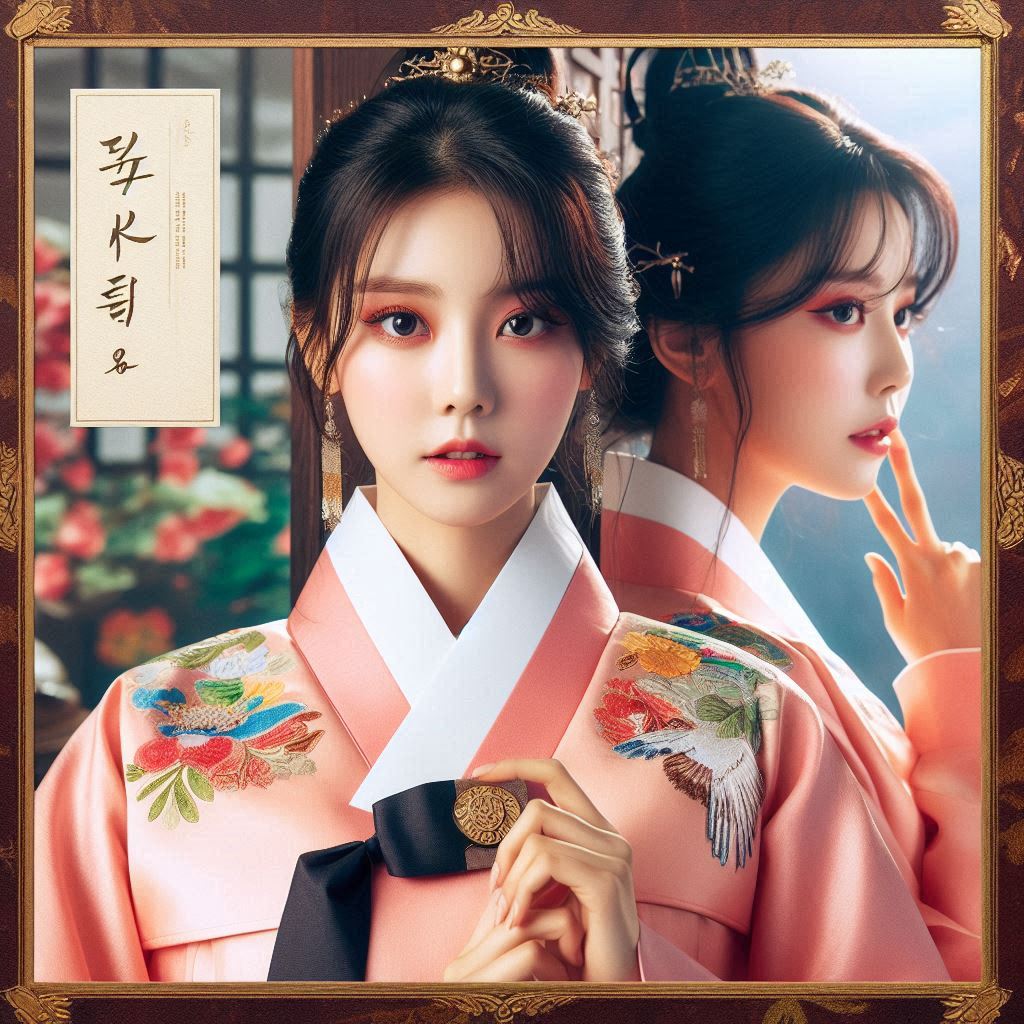2024. 11. 18. 11:32ㆍK-Beauty & Fashion
The Grace of Hanbok: Korea’s Timeless Traditional Attire 👗✨
The hanbok (한복) is more than just clothing—it’s a symbol of Korean culture, history, and beauty. With its vibrant colors, elegant lines, and flowing fabrics, the hanbok has been cherished for centuries as a representation of grace and modesty.
Whether you’ve admired it in historical dramas or seen it worn during traditional ceremonies, the hanbok’s charm lies in its timeless design and cultural significance. Let’s explore the history, styles, and modern resurgence of this iconic attire. 🌟
1. What is Hanbok? An Introduction to Korea’s Traditional Clothing 👘
The hanbok, which translates to "Korean clothing," was the everyday attire of Koreans for over 1,600 years until Western-style clothing became common in the 20th century.
Key Features of Hanbok
- Jeogori (저고리): The top garment, worn by both men and women.
- Chima (치마): A long, high-waisted skirt for women, flowing gracefully with movement.
- Baji (바지): Loose-fitting pants for men, allowing ease and comfort.
- Colors and Patterns: Each hanbok’s color, pattern, and embroidery often indicated the wearer’s social status, age, or occasion.
Fun Fact: Hanbok is designed to highlight the natural beauty of movement, making it elegant when walking or bowing. 💃
2. A Journey Through History: The Evolution of Hanbok 📜
Hanbok’s design has evolved over the centuries, reflecting Korea’s history and social changes.
- Three Kingdoms Period: Early hanbok featured simple, functional designs influenced by nomadic lifestyles.
- Joseon Dynasty: Hanbok reached its most iconic form during this era, with bright colors, intricate embroidery, and wider skirts. Social hierarchy heavily influenced styles.
- Modern Adaptations: Today, hanbok is worn primarily for special occasions like weddings, holidays, or cultural festivals.
Did You Know? Traditional hanbok was made from natural fabrics like silk or hemp and dyed with natural pigments, such as indigo and persimmon. 🌿
3. Symbolism of Hanbok Colors and Designs 🌈
The hanbok’s vibrant colors and patterns are more than decorative—they carry deep cultural meanings.
- Colors:
- White: Purity and humility; often worn by commoners.
- Red: Passion and good fortune; common in bridal hanboks.
- Blue: Hope and vitality; associated with youth.
- Yellow and Gold: Royalty and wealth.
- Patterns:
- Peonies: Represent wealth and honor.
- Cranes: Symbolize longevity and good fortune.
- Lotus Flowers: Indicate purity and enlightenment.
Tip: When choosing a hanbok, consider the symbolism of its colors and patterns for the occasion. 🎨
4. Hanbok in Modern Korea: Tradition Meets Fashion 🌟
While hanbok is no longer everyday wear, it continues to hold a special place in Korean culture.
When Do People Wear Hanbok Today?
- Holidays: Families often wear hanbok during Seollal (Lunar New Year) and Chuseok (Korean Thanksgiving).
- Weddings: Brides and grooms wear specially designed hanbok for traditional wedding ceremonies.
- Coming-of-Age Ceremonies: Marking milestones in life with hanbok.
- Cultural Events: Festivals and performances showcase the beauty of traditional hanbok.
Modern Hanbok Trends
In recent years, modernized hanbok has gained popularity. Designers blend traditional elements with contemporary styles, making hanbok more accessible for daily wear.
- Shorter Skirts: A casual twist on the classic chima.
- Simplified Designs: Minimalist patterns and softer colors for a modern look.
- Pop Culture Influence: K-pop idols and actors often wear hanbok-inspired outfits, bringing them back into the spotlight.
Example: BTS donned modern hanbok during their "Idol" performances, sparking global interest in traditional Korean fashion. 🎤
5. Where to Experience Hanbok in Korea 🏯
If you’re visiting Korea, there are plenty of opportunities to try on hanbok and experience its elegance firsthand.
Top Hanbok Experiences
- Hanbok Rental: Popular in tourist areas like Gyeongbokgung Palace and Bukchon Hanok Village, where you can wear hanbok while exploring historical landmarks.
- Cultural Centers: Places like the Korea House in Seoul offer hanbok experiences as part of traditional workshops.
- Festivals: Events like the Hanbok Culture Week celebrate Korea’s traditional attire with fashion shows and exhibitions.
Pro Tip: When visiting palaces in hanbok, you can enter for free! A great way to save while immersing yourself in history. 🎟️
6. Tips for Wearing Hanbok Gracefully 🌺
Wearing a hanbok is a unique experience, but it can feel different from modern clothing. Here’s how to rock the look:
- Posture Matters: Stand tall and let the flowing lines of the hanbok enhance your silhouette.
- Accessorize: Traditional accessories like a norigae (pendant) or binyeo (hairpin) add extra elegance.
- Move Gracefully: Hanbok is designed to highlight natural movements—walk slowly and let the fabric sway.
Fun Tip: If you’re not used to hanbok’s high waistline, practice sitting down gracefully before heading out! 🪑
7. The Global Appeal of Hanbok 🌏
Thanks to the Korean Wave (Hallyu), hanbok has gained international recognition as a symbol of Korean heritage.
- K-pop and K-dramas: Shows like Kingdom and The Red Sleeve showcase the beauty of historical hanbok.
- Global Fashion Influence: Designers worldwide are inspired by hanbok’s structure and aesthetics.
- Cultural Awareness: Festivals and events abroad celebrate hanbok, introducing it to global audiences.
Inspiration: Hanbok represents Korea’s balance of tradition and innovation, making it a timeless cultural icon. ✨
Conclusion: Hanbok, A Living Tradition 👗💕
The hanbok isn’t just clothing—it’s a celebration of Korean history, culture, and artistry. Whether you wear it for a special occasion, see it in a performance, or admire it from afar, hanbok reflects the elegance and resilience of Korean tradition.
Have you ever worn or seen a hanbok in person? Share your experience and favorite styles in the comments below! 🌸👇

#Hanbok #KoreanCulture #TraditionalClothing #GraceOfHanbok #KoreanTradition #ModernHanbok #KoreaTravel #HanbokFashion #CulturalHeritage #ExploreKorea
